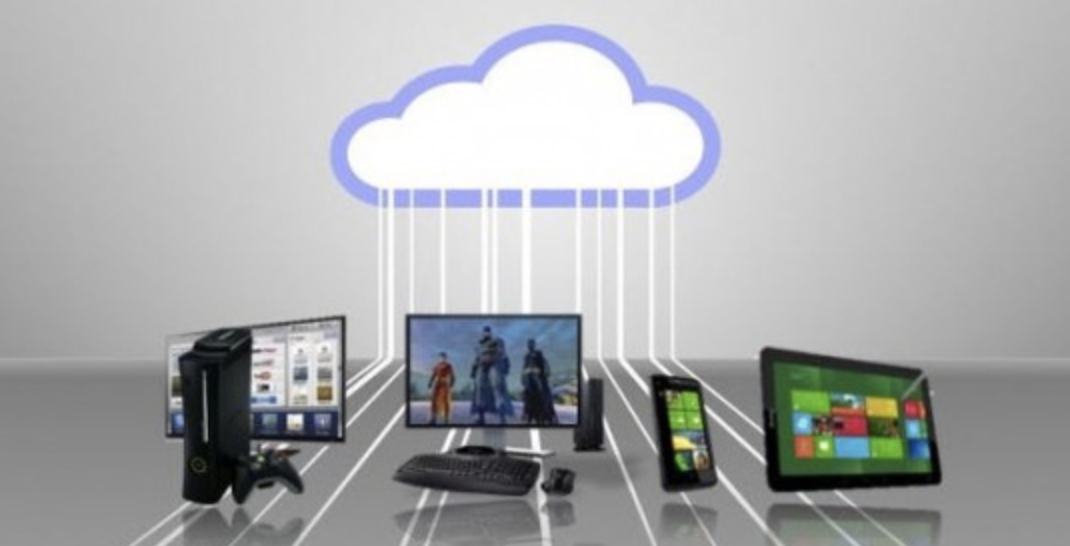The gaming market is one of, if not the market segment that is seeing some of the biggest overall changes. From a segment viewpoint, gaming is one of the hottest categories around in both software and hardware. It is easily the biggest bright spot from a hardware standpoint with gaming hardware and accessory companies seeing continued strong growth and retailers continuing to be happy with the gaming segment performance compared to all other categories. Interestingly, we are still only in the early stages of major changes to the category as the market is continuing to grow and bring in new consumers, innovative new software, and business model changes.
Shift to the Clouds
The idea of streaming a video game has been an industry promise for many years. Some early pioneers, like OnLive, came and went but showcased the promise of cloud gaming, or Gaming as a Service (Gaas), but also highlighted the limits of the technology at the time. The single biggest challenge with streaming visually intense games from the cloud is latency. Which is not a significant issue for a casual, single-player focused game, but it is a problem with multiplayer games. Any latency whatsoever can be the difference between life and death in a competitive multiplayer game.
That was then, and the backend datacenter hardware, as well as household broadband speeds and wireless network speeds, have all increased. Cloud gaming is now more feasible than ever, and many companies are jumping on the opportunity. Just looking at the western markets the short list of cloud gaming offerings is as follows: NVIDIA, Sony, Microsoft, EA, Valve, and now Google. The list in China is even longer. Prices of these services range from $4.99 a month to $19.99 a month, but the value of having access to a large catalog of games to play without the need of dedicated gaming hardware has significant value.
The biggest challenge facing Gaming as a Service is publisher support with the newest and most critical game titles. As of now, many publishers are “windowing” availability of their biggest titles and either not bringing them to a streaming service or doing so more than a year later. Currently, PlayStation Now has the largest category of games at 500 total but also has the highest price of $19.99 a month.
A key thing enabled by cloud gaming is the elimination of dedicated gaming hardware and in particular an embrace of cross-platform. Many gaming services like PlayStation Now, NVIDIA’s GeForce Now, let consumers play games on PC and Mac and sometimes iOS and Android as well. This, to me, is perhaps one of the most significant signals of what is to come in the future.
Play Anywhere, Any Time, With Anyone
I’ve written about how the shift to the cloud will break down walls which have formerly existed in the gaming industry. To be clear, the walls are starting to crack, but there is still a lot of work to do to break them down completely. For example, Google’s latest cloud offering released this week, only works on their Chrome browser. I’m less optimistic about gaming as service solutions that have walls than ones like Sony’s and NVIDIA’s offerings which understand the cross-platform reality that exist for most consumers. I’m hoping Microsoft’s upcoming solution also embraces cross-platform and a world without walls because it’s better for consumers and the gaming industry.
I keep using Fortnite as the example because the behaviors we have seen in the market make it clear Fortnite’s model is the future. The biggest change that Fortnite brought was the ability to play with anyone regardless of what hardware or platform they were playing on. For the first time, a global audience could play on any hardware and play together. This is the future, and there is no going back. Cloud plays a role in this because Fortnite is truly a cloud platform, but it leverages the local hardware resources and provides better gameplay when on better hardware. The choice is up to the player. If they want to be hyper-competitive, then they can invest in better hardware. If they just want to play casually and have fun, then a browser or mobile device is sufficient.
There is significant value for consumers but also to publishers to every go back from this model. With the Game Developer Conference this week I had a chance to talk with some of my contacts at big game publishers of AAA titles, and they all agree this is where things are heading. They also acknowledge it will take time. The key here is publishers can now truly look at the entire connected world as their addressable market with a much easier engineering process. To date, publishers go through a lot of work to develop titles that work only on specific platforms. They have to pour engineering into making a game for XBOX, Playstation, Nintendo, PC, etc. Each has unique benefits and costs massive resources to try and cover the whole market. As gaming moves to the cloud, we get closer to a write-once work anywhere solution for publishers. Economically, there is more upside with the benefit of being better for consumers as well.
As I said, we are early days but I’m convinced a combination of Gaming as a Service solution, with true cross-platform multi-player will open up the floodgates for the gaming market and expand the category to new heights.

A big thank you for your blog.Really looking forward to read more. Want more.